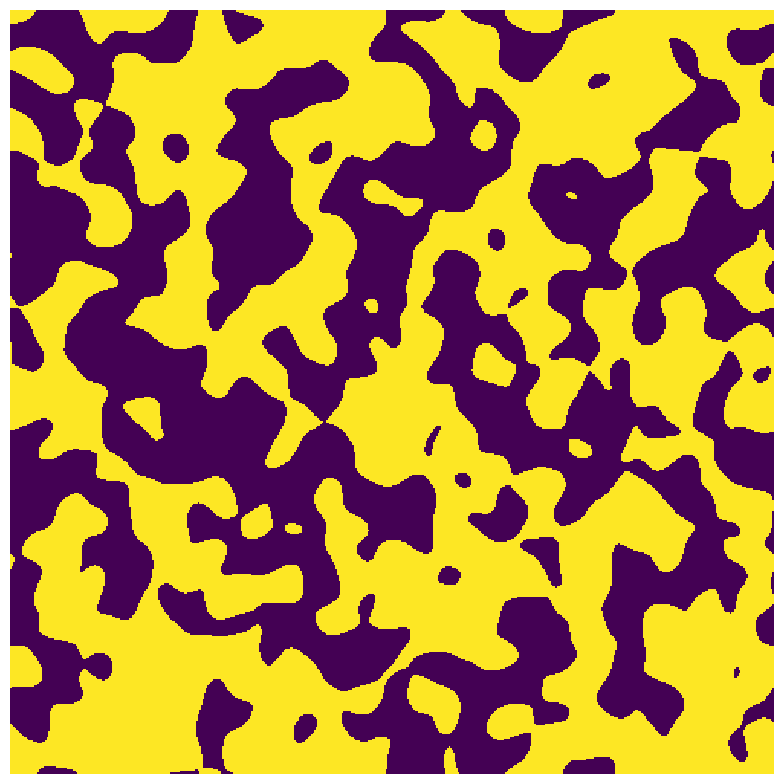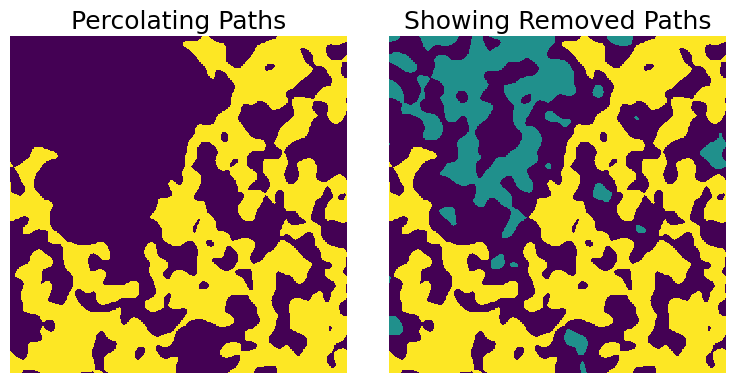trim_nonpercolating_paths#
trim_nonpercolating_paths function is a filter which removes all nonpercolating paths between specified locations.
import numpy as np
import porespy as ps
import scipy.ndimage as spim
import matplotlib.pyplot as plt
ps.visualization.set_mpl_style()
im#
This function works on both 2D and 3D boolean images of the pore space:
np.random.seed(0)
im = ps.generators.blobs(shape=[500, 500], porosity=0.55, blobiness=1.5)
plt.figure(figsize=[8, 8])
plt.axis(False)
plt.imshow(im);

inlets and outlets#
Inlets and outlets are specified by creating boolean images the same shape as im, with True values indicating which voxels are inlets and outlets, respectively. The function then only keeps paths which connect to both inlets and outlets:
inlets = np.zeros_like(im)
inlets[0, :] = True
outlets = np.zeros_like(im)
outlets[-1, :] = True
x = ps.filters.trim_nonpercolating_paths(im=im, inlets=inlets, outlets=outlets)
fig, ax = plt.subplots(1, 2, figsize=[8, 4])
ax[0].imshow(x)
ax[0].set_title("Percolating Paths", fontdict={"fontsize": 18})
ax[0].axis(False)
ax[1].imshow(x + (im != x) * 0.5)
ax[1].set_title("Showing Removed Paths", fontdict={"fontsize": 18})
ax[1].axis(False);

